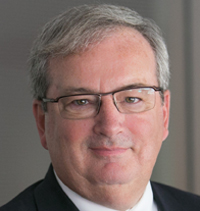Several years ago I had the privilege of speaking at an Associated Press Editors meeting in Alpena, Michigan. As things turned out, I was the only passenger on a rather large Northwest commuter airplane that went from Detroit to Alpena. Under normal conditions the flight might have been canceled, but Northwest needed the plane for a large passenger load the next morning. So I was the unintended beneficiary (sole passenger) of their advance planning process.
That experience came to mind yesterday when the Science and Technology Directorate held their inaugural Bloggers Roundtable, and I was the only blogger to participate. (Disclaimer: There were two of us at first, but the other guy kept losing his cell signal and eventually dropped off.) Because the event was recorded for the DHS S&T website, they decided to proceed with the call and I had the privilege of getting to ask as many questions as I wanted to pose. (They were supposed to post the the audio of the event on the website, but if they did it is impossible to find.)
Tom Cellucci, the Chief Commercialization Officer for S&T, was the kick-off presenter and he did his usual thorough job of explaining what he does… and how he does it… and how many books his shop has written…and how many meetings they have held…and how many CRADAs they have “in process”…and how many…. well, it is easier to say that his talk was filled with facts and figures that would make the budget justification folks feel good. He talked about the SECURE and FutureTECH programs as well as a Product Realization Chart that gave more context to those programs than is available on the S&T web site. (There is not much readily available on the S&T website. Or maybe there is. Who would know? It’s impossible to navigate or find anything. Did I mention this already?) So from the standpoint of gathering critical information from S&T, the Roundtable was quite helpful.
It was also filled with the typical platitudes that accompany any Tom Cellucci presentation – but hey, the guy is a good salesman and his mission is to sell the S&T message, especially within the first responder community, where he is spending a significant amount of his time. We often joked that former S&T Undersecretary Jay Cohen loved to talk so much that he would speak at a garage door opening if he could draw a crowd. Tom is not far behind in his willingness to speak any place at any time to any audience of any interested group.
Tom explained how the Commercialization Office works with private sector companies and within the DHS customer community. He outlined three main sets of customers: component DHS agencies such as CBP, ICE and TSA; the 18 Sectors as identified by the Infrastructure Protection office at DHS; and state and local groups, such as the first responders with whom Tom so closely identifies (a self-described “pavement weenie” as a structural firefighter, he claimed.) He was a bit fuzzier in explaining how his work intersected with the Capstone IPTs and Project IPTs, but the “fuzz” may have been because I was confused about the term “Project IPT,” as that process has not had as much transparency as the Capstone meetings, which occur only 3 or 4 times per year.
Overall it was a good briefing, and I give S&T high marks for beginning to open itself to the public and media in a transparent fashion. The roundtable gave me an opportunity to ask questions about how the Commercialization office might be tied closer with the acquisition process (something where the public and private sector would find benefit, I believe.)
It was a shame that more folks did not participate. And it will be a shame also if S&T decides to curtail the Bloggers Roundtables due to limited participation. I suspect they will get more participation as word of the events gets around, so I encourage S&T to pro-actively promote this communications channel and gain additional value. Otherwise it, like some of the technology programs that S&T funded in its early years, will simply be a good idea that sits on a shelf waiting on customer usage.


